Hernia Repair Surgery in Sydney
Serving Bella Vista, Campbelltown & Kogarah
What Is A Hernia?
A hernia is a weak spot between a muscle or tissue and a connecting organ. This weakness or defect that may be present from birth or develop over a period of time and occurs when an organ or fatty tissue squeezes through the weak spot. A hernia can result in a bulge or protrusion of part of the body into another part of the body that would normally contain it. If large enough, there will be a protrusion of abdominal contents, such as the bowel. A hernia will tend to enlarge and continue to cause discomfort. If a loop of bowel gets caught in the hernia, it may become obstructed or restrict blood supply. A hernia that causes this type of obstruction It could then become a life-threatening situation.
Common Types of Hernia
The most common types of hernia are:
- inguinal (inner groin)
- incisional (resulting from an incision)
- femoral (outer groin)
- umbilical (belly button)
- hiatal (upper stomach)
Inguinal Hernia
In an inguinal hernia, the intestine or the bladder protrudes through the abdominal wall or into the inguinal canal in the groin. About 96% of all groin hernias are inguinal, and most occur in men because of a natural weakness in this area.
Incisional Hernia
In an incisional hernia, the intestine pushes through the abdominal wall at the site of previous abdominal surgery. This type is most common in elderly or overweight people who are inactive after abdominal surgery.
Femoral Hernia
A femoral hernia occurs when the intestine enters the canal carrying the femoral artery into the upper thigh. Femoral hernias are most common in women, especially those who are pregnant or obese.
Umbilical Hernia
In an umbilical hernia, part of the small intestine passes through the abdominal wall near the navel. Common in newborns, it also commonly afflicts obese women or those who have had many children.
Hiatal Hernia
A hiatal hernia (or hiatus hernia) occurs when a portion of the stomach squeezes, slides or protrudes through a gap in the diaphragm (hiatus), or an opening in the diaphragm through which the esophagus passes.
2 Main Types Of Hiatus Hernia
Sliding Hiatus Hernia
This is the most common type of hiatus hernia. It occurs when the junction between the oesophagus and the stomach and the upper part of the stomach protrude up through the oesophageal opening in the diaphragm into the chest cavity. The herniated portion of the stomach can slide back and forth, into and out of the chest.
Rolling hiatus hernia:
This is sometimes called a para-oesophageal hiatus hernia by doctors. In this case, part of the stomach bulges into the chest out of the weakest part of the diaphragm, which is the oesophageal opening. The junction of the oesophagus and stomach stays down within the abdomen, and the top part of the stomach (the fundus) bulges up into the chest cavity. This type of hernia normally remains in one place, sitting next to the oesophagus, and does not move in or out when you swallow.
What Are The Symptoms Of A Hernia?
Pain at the site of the protrusion is often felt, particularly when lifting a heavy object. A lump can be felt in the groin area when standing or straining. Excruciating abdominal pain occurs where there is strangulation. Nausea, vomiting and loss of appetite indicates intestinal obstruction. Most people are not troubled by their hiatus hernia, but if reflux of the acid contents of the stomach occurs (called gastro-oesophageal reflux), you get heartburn. This is a painful burning sensation in the chest, which can sometimes be felt in the throat. Sudden regurgitation of acid fluid into the mouth can occur, especially when you lie down or bend forward. These symptoms are a problem when you go to bed and can wake you up. Other symptoms include belching, pain on swallowing hot fluids and a feeling of food sticking in the oesophagus.
Diagnosis Of A Hernia
Dr Kuzinkovas will need to diagnose the specific nature and extent of the Hernia. Often, a hernia can be identified during a physical exam but Dr. Kuzinkovas may want other diagnostic exams to pinpoint specific aspects. Diagnostic methods could include:
- Consulation - During this consultation Dr Kuzinkovas will take a medical history, perform a physical examination and assess the symptoms and reports
- Blood Test - there are is no blood test for hernia
- Arthroscopy - link to Arthroscopy page
- Imaging tests - In order to clearly understand the nature of the Hernia imaging scans are required.
- X-rays - do not show soft tissue but are often normal as they can help rule out other local problems that may have similar symptoms.
- MRI - can create detailed images of both hard and soft tissues within your affected region. An MRI can produce cross-sectional images of internal structures required if the diagnosis is unclear or if other soft tissue disease is suspected
- Ultrasound - can allow Dr Kuzinkovas to examine the internal region in motion. This can help determine aspects of the condition.
- While not all of these approaches or tests are required to confirm the diagnosis, this diagnostic process will also allow Dr Kuzinkovas to review any possible risks or existing conditions that could interfere with the surgery or its outcome.
Treatment For General Symptoms
General guidelines for treating heartburn and oesophagitis (inflammation of the oesophagus) are:
- Avoid (or use only in moderation) foods and substances that increase
- Reflux of acid into the oesophagus, such as:
- nicotine (cigarettes)
- caffeine
- chocolate
- fatty foods
- peppermint
- alcohol
- spearmint
- Eat smaller, more frequent meals and do not eat within 2-3 hours of bedtime.
- Avoid bending, stooping, abdominal exercises, tight belts, and girdles all of which increase abdominal pressure and cause reflux.
- If overweight, lose weight. Obesity also increases abdominal pressure.
- Prescription medications.
- Elevate the head of the bed 8 to 10 inches by putting pillows or a wedge under the upper part of the mattress. Gravity then helps keep stomach acid out of the esophagus while sleeping.
Other Treatments Drugs
Some medicines effectively reduce the secretion of stomach acid, while others increase the muscle strength of the lower esophagus, thereby reducing acid reflux.
Suitability For Hiatus Hernia Surgery
The complicated hiatus hernia requires surgery occasionally on an emergency basis. Surgery otherwise is reserved for those patients with complications that cannot be handled with medications. The mere presence of a hiatus hernia is not a reason for surgery. Surgical treatment is called for when the hernia results in symptoms, such as persistent heartburn or difficulty in swallowing. Acid inflammation and ulceration of the lower oesophagus also require treatment. Due to effective treatment and repair, if you have been diagnosed with a hernia, there is little reason to continue to suffer the symptoms.
Surgical Treatments For Hiatus Hernia
Surgical repair of hernias usually involves closing the hernia with either suture material or more commonly mesh. Mesh repairs are generally more durable than suture repairs for large hernia defects. The most common type of hernia is an inguinal hernia.
Laparoscopic Hiatus Hernia Repair
Dr Kuzinkovas normally performs the surgery laparoscopically. This involves three small cuts using the operating telescope (laparoscope) to place a mesh inside the abdominal wall. This returns structural integrity to the abdomen. This modern operation is less painful and allows quicker recovery to normal activities. Traditionally this was repaired with a large incision and placement of a synthetic mesh on the outside of the abdominal wall to cover the weakness.
Risks With Hernia Repair
There are some risks of laparoscopic hernia repair that are shared by all operations, these risks occur rarely. They are: heart attack, stroke, clot in the lungs (pulmonary embolus), significant bleeding, infection and injury to the bowel. There are some risks that are specific to laparoscopic inguinal hernia repair. They are:
- About 1% of hernias repair patients will require revision surgery for a recurrent hernia
- Rarely (about 0.01%) there can be an injury to the bladder, spermatic cord or nerve.
- Sometimes the hernia cannot be repaired with the laparoscope and an old fashioned open repair is necessary.
- Occasionally patients have difficulty passing urine after the operation.
If you have any problems come to the hospital, see your GP or give Dr Kuzinkovas a call in the rooms by telephone.
After Your Hernia Operation:
Recovery
You will be able to go home after the operation once you are comfortable. This is usually on the day of the operation. Some patients may need one night in hospital. The incision wounds take 7-10 days to heal. When first at home:
- Try not to drink too much for the first 24 hours.
- Do not drive for at least two days.
- Do not partake in heavy lifting (nothing heavier than a bucket of water) or strenuous exercise for a week.
Most patients improve dramatically in the first 6 weeks. Occasionally, there are periods where local pain may become sore and then settle again. This is part of the normal healing process. It takes some weeks for your stomach to fully recover from arthroscopy. Continued improvements may be gained up to 1 year post-surgery.
Surgeon Review
Dr Kuzinkovas would like to see you in the rooms about four weeks after the operation.
Complications
If any postoperative problems arise with your Hernia, such as redness, increasing pain or fevers, do not hesitate to contact Dr Kuzinkovas. If unavailable, seek advice from the hospital or your general practitioner.
Pain Management After Hernia Surgery
A patient’s experience of pain will vary depending on the procedure performed and the amount of pre-existing damage in the Hernia. After your operation you will have pain medication and antibiotics. Most patients are pleasantly surprised at how little pain they have after the procedure. Local anaesthetic is injected before and after the procedure to minimise any pain you may feel.
Mobility
Walking - walking is allowed immediately. Initially, this will be aided by crutches. Most people will walk independently by 2-3 days post-operatively.
Driving - do not drive for 48 hours after an anaesthetic. After 48 hours, your ability to drive will depend on the side you had your operation, left or right, and the type of vehicle you drive, manual or automatic. You can drive whenever you feel comfortable. Otherwise, it is reasonable to drive when you are confident with walking.
Returning To Work After Hernia Surgery
Return to work will vary depending on the procedure performed and type of work you are engaged in. Most people can return to office work within 2 weeks. Labour intensive work however, may require you to take 4-6 weeks before returning to full duties. During this period patients are not fit to perform work duties that involve:
- prolonged standing
- heavy lifting
- bending
- excessive stair climbing
Return To Sport
Activities or sports can be restarted after the wound is healed, this means postoperative swelling has subsided and range of movement is restored. However, it is best to delay leisure activities or sports for 6 weeks to allow the Labrus time to heal and repair. Low impact activities, such as cycling and swimming, can be commenced from week 4. If your procedure involves bone removal, high impact activities, such as running and jumping are best avoided for 6 weeks post-surgery. Sport specific re-training can commence from week 6, with the aim to return to elite level sports 2-3 months post-surgery.
Post Operative Rehab
Participating and completing a tailored exercise program after surgery (ie. rehab) with a trained physiotherapist will achieve the best result for you after surgery.
Schedule A Hernia Surgery Consultation
Advanced Surgicare provides three weight loss clinic locations to serve you in Kogarah, Campbelltown and Bella Vista which allows a short trip for anyone seeking bariatric surgery services in Penrith, Camden, Blacktown, Castle Hill, Baulkham Hills, Hurstville, Rockdale, Miranda, Caringbah, Harrington Park, and Narellan. To schedule a consultation with Dr. Kuzinkovas, please contact Advanced Surgicare Clinic by calling 1300 551 533.


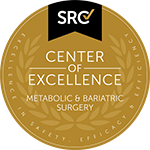
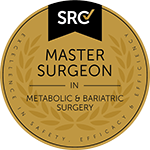
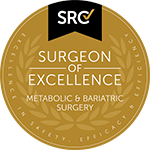
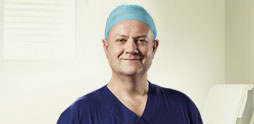






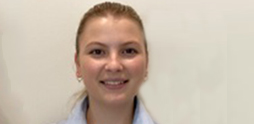

 Practice Tour
Practice Tour Patient
Patient














